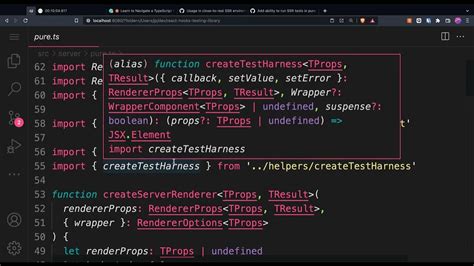Open-sourcing a SaaS product is a bold move that combines a love for software with an entrepreneurial spirit. This process can breathe new life into a stagnant growth trajectory, but it isn’t without its complexities and potential pitfalls. Kirill Markin and Nikolay Amiantov’s recent experience of open-sourcing their CRM/ERP product, which has been under development since 2017, sheds light on the multifaceted journey from a closed to an open ecosystem. They have a working product with a backend of F# and a frontend of TypeScript and Vue.js, boasting real paying customers. As they strive to pivot and add value with cutting-edge technologies like LLMs, they face the daunting task of how to effectively open-source their codebase and build a thriving community around it.
One of the key takeaways from the community feedback is the need for a well-structured approach to open-source transition. Peggy from Scale.dev provides consultation services that encapsulate the strategic planning necessary for such a move. This reinforces the notion that professional guidance can be critical, especially for those uninitiated in the nitty-gritty of open-source dynamics. However, the cost factor remains a significant consideration, as pointed out by another user. Not all startups can afford consultancy fees, and even if they can, they must weigh these costs against the potential benefits of open-sourcing.
A fundamental piece of advice is to ensure there’s a way for interested parties to stay informed about the project. The suggestion of having a sign-up form for updates highlights the importance of keeping potential users and contributors in the loop. This form could serve as a vital touchpoint for ongoing engagement. As Kirill indicated, setting up a GitHub repository is essential, but it’s also critical to utilize tools like GitGuardian to manage any sensitive information accidentally included in commits. Transparency and trust start with secure and properly managed code repositories.
Open-source is often romanticized as the panacea for all growth ailments, but it’s essential to approach it with clarity and caution. One user, dangus, broaches the subject with a stark dose of reality. Simply flipping the switch from private to public doesn’t automatically make a product more appealing. The business essence should solve tangible customer pain points. The notion that open-sourcing is just another step, akin to releasing a new feature or update, must be dispelled. This shift is more profound and requires evaluating the underlying product-market fit and marketing efforts. Open source won’t necessarily attract a sudden surge of users unless the product itself addresses a significant and well-communicated problem.
Building a community around an open-source product demands sustained effort, as echoed by several community members. Involving integrators and developers is crucial, but the challenge is to create an ecosystem where they see tangible benefits in contributing. This includes having well-designed documentation, a clear roadmap, and multiple channels for engagement like Discord and forums. Markin and his team are already considering these steps, which shows a promising start. The idea of a pain-dream-fix approach to their messaging could further help in aligning the utility of their product with the real-world problems their target audience faces.
One intriguing aspect of this project is the licensing model they choose. As discussed in the comments, a dual-licensing approach can balance the open-source and commercial aspirations. Licenses like AGPL can encourage contributions back to the core project, but they must tread carefully to avoid alienating potential users and contributors. Markin mentioned a preference for Apache-2.0, which is seen as a developer-friendly choice, offering a level of freedom and reassurance against vendor lock-in. This strategic decision must resonate with both developers and the broader business community.
The roadmap ahead for Kirill and his co-founder involves more than just the technical and community-building aspects. It’s also about aligning their business goals with the open-source ethos. Encouraging active participation requires them to continuously engage with their community through regular updates and integrations. The potential of turning a profitable, yet slow-growing, venture into a fast-growing open-source success story is tantalizing but fraught with challenges. Their journey underscores the importance of balancing excitement with pragmatism, ensuring that the ultimate goal remains solving customer problems while fostering a robust, engaged community.


Leave a Reply